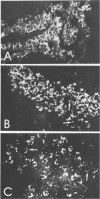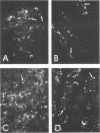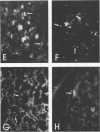Abstract
Hantaan virus, the etiological agent of Korean hemorrhagic fever, was inoculated intracerebrally or intraperitoneally into suckling mice, and the course of the infection was followed by infectivity titration and immunofluorescence studies. Mice became ill and were moribund by 13 to 14 days postinfection. In mice inoculated either intracerebrally or intraperitoneally, virus antigen was present in brain, heart, lungs, liver, and kidney. Less consistently, specific fluorescence was observed in spleen, pituitary gland, thymus, lymph nodes, adrenal, pancreas, salivary glands, trigeminal ganglia, adipose tissue, intestine, and muscle. In all of these tissues, the primary target of infection was the capillary endothelium. In mice inoculated intracerebrally, virus antigen was present mainly in choroid plexus, hippocampal nuclei, and meninges, but in mice inoculated intraperitoneally, central nervous system infection was marked by antigen accumulation in cortical nuclei and thalamus.
Full text
PDF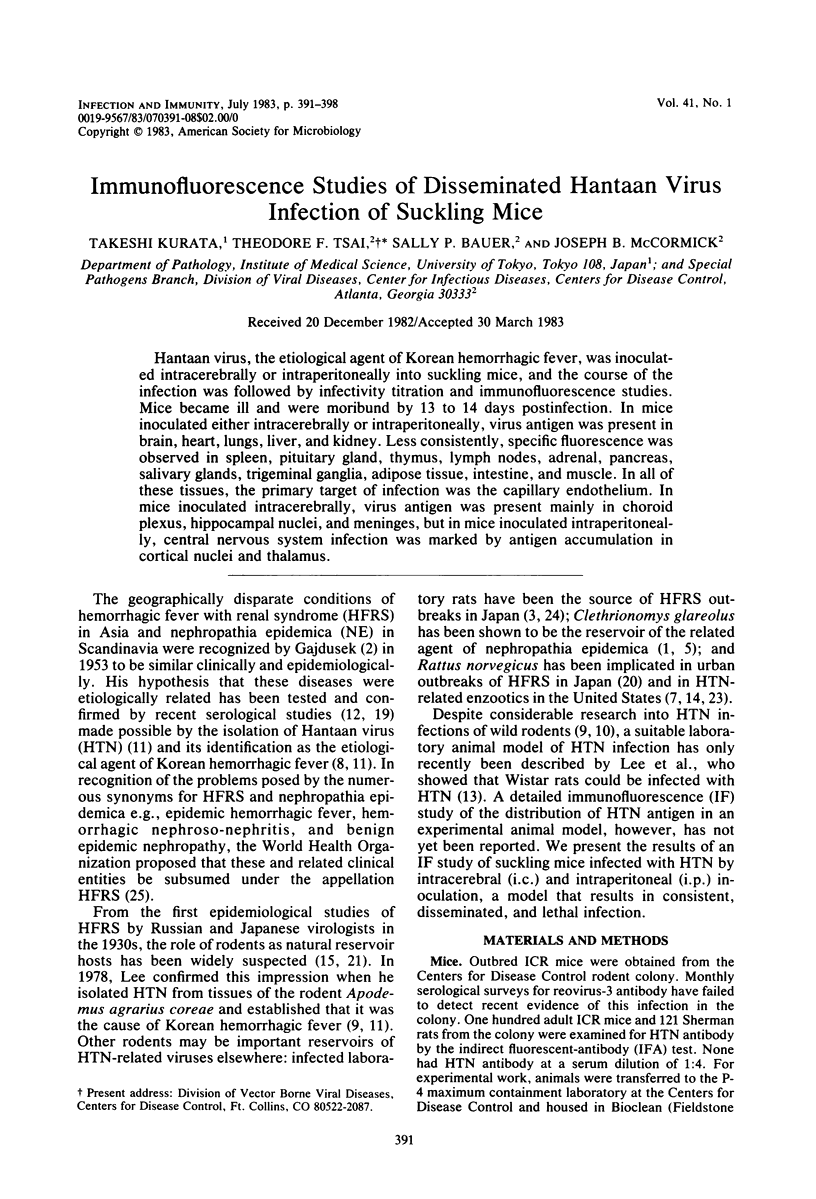
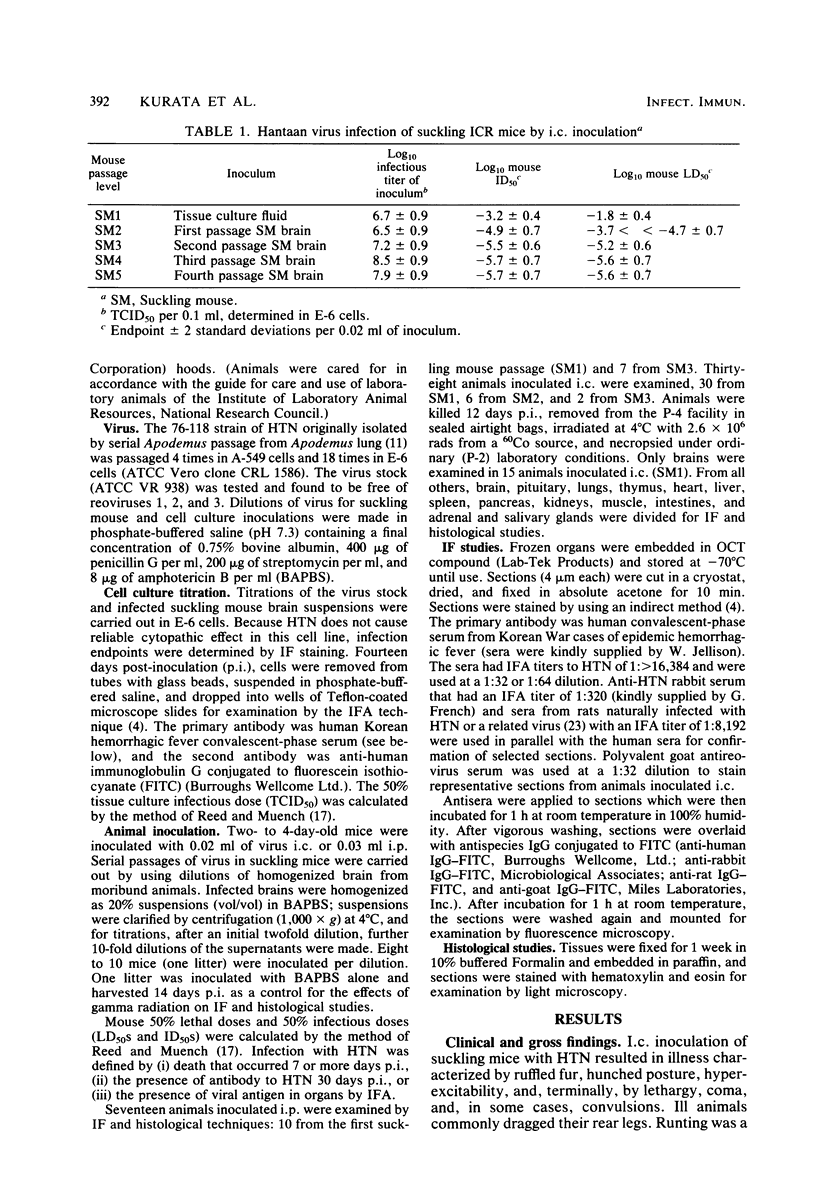
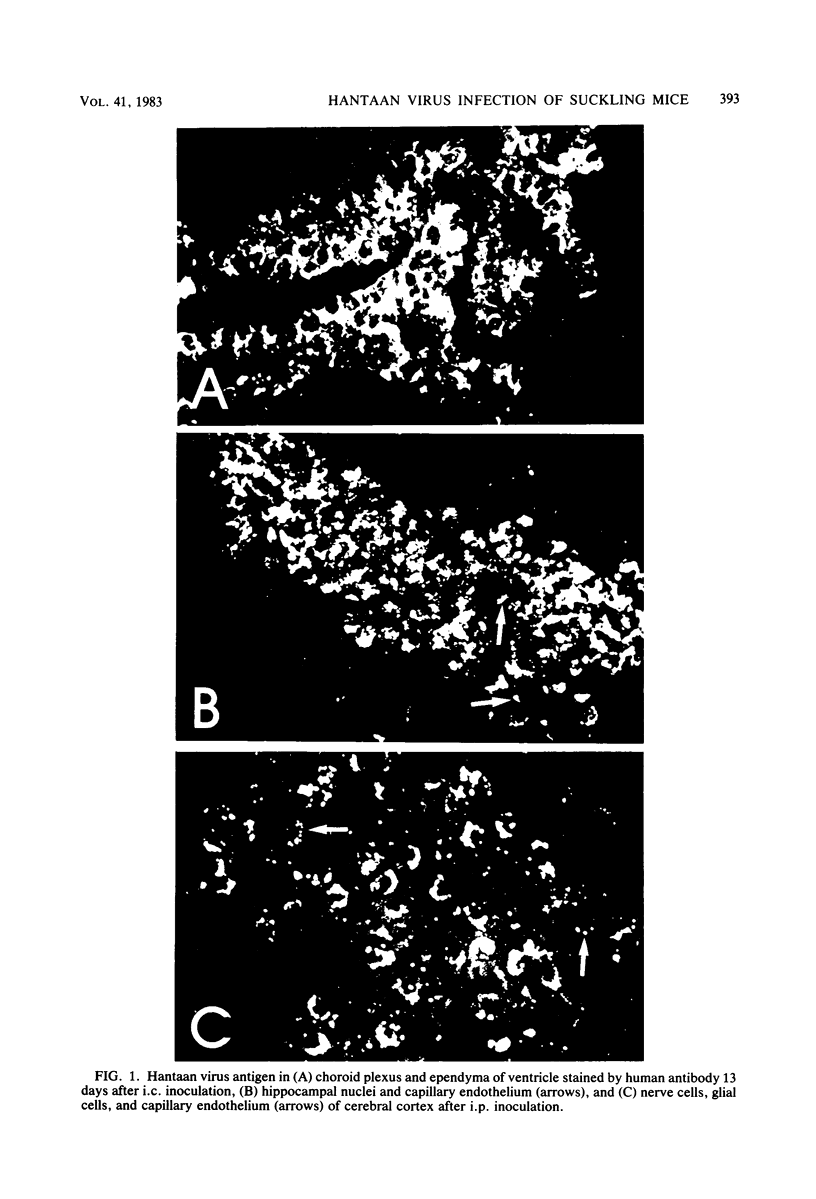
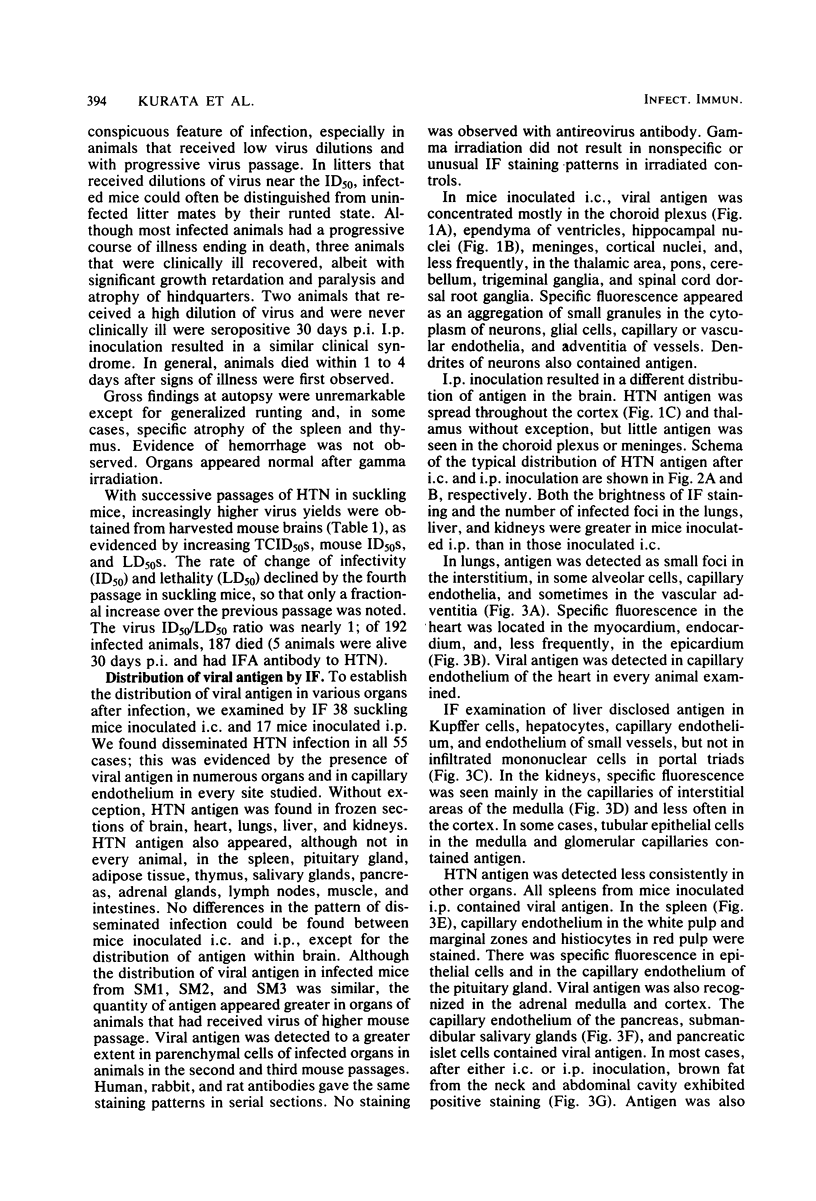
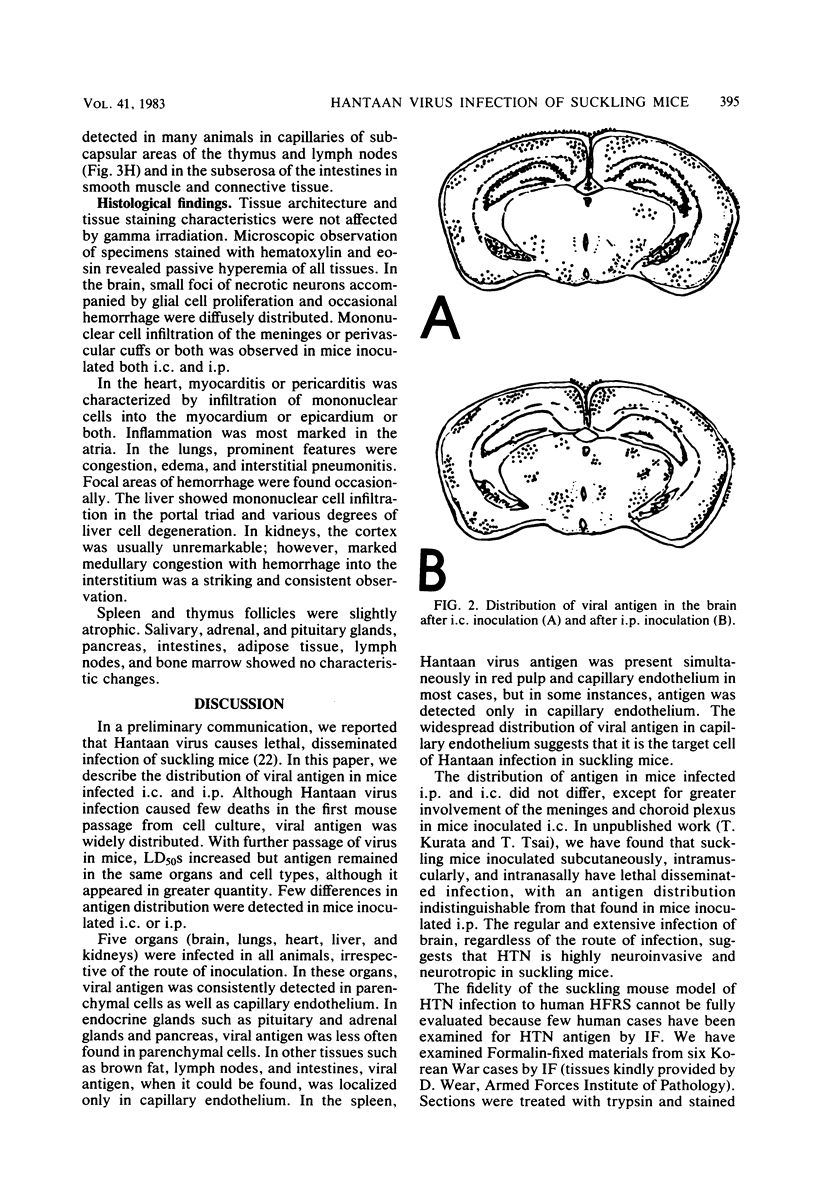
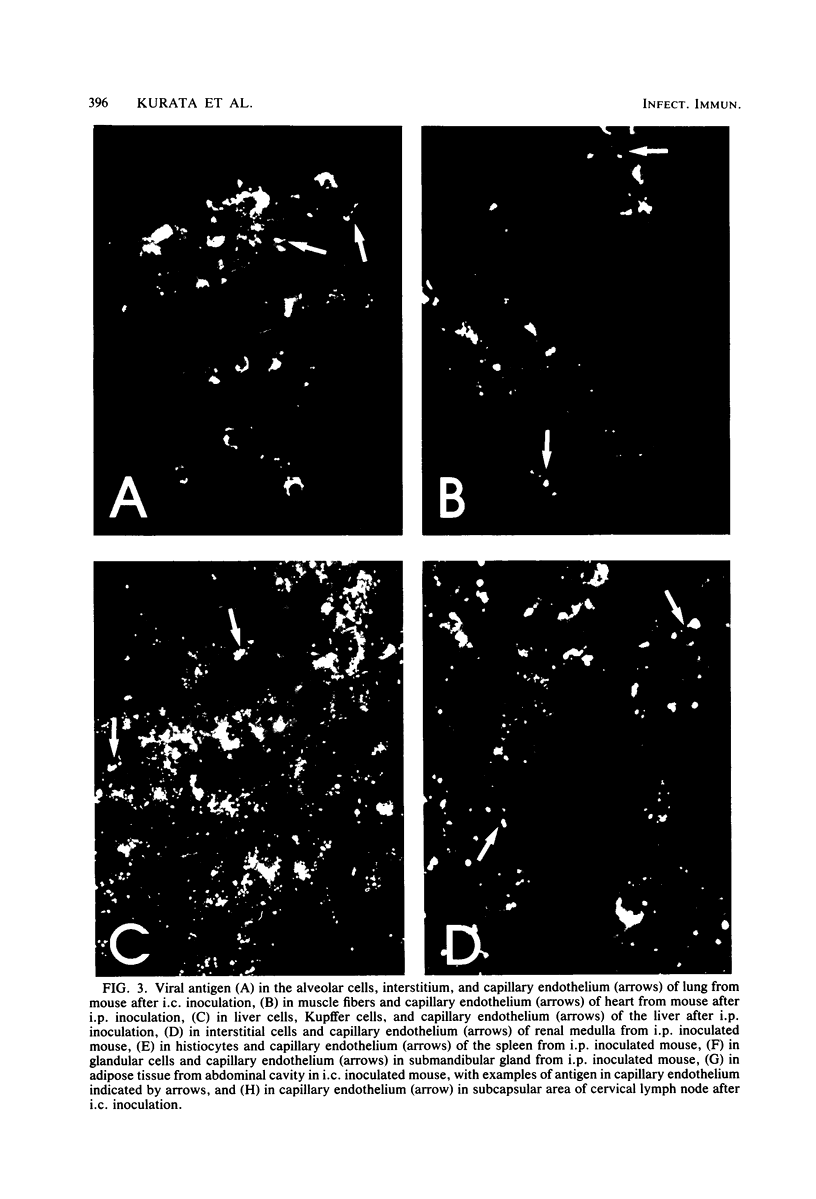
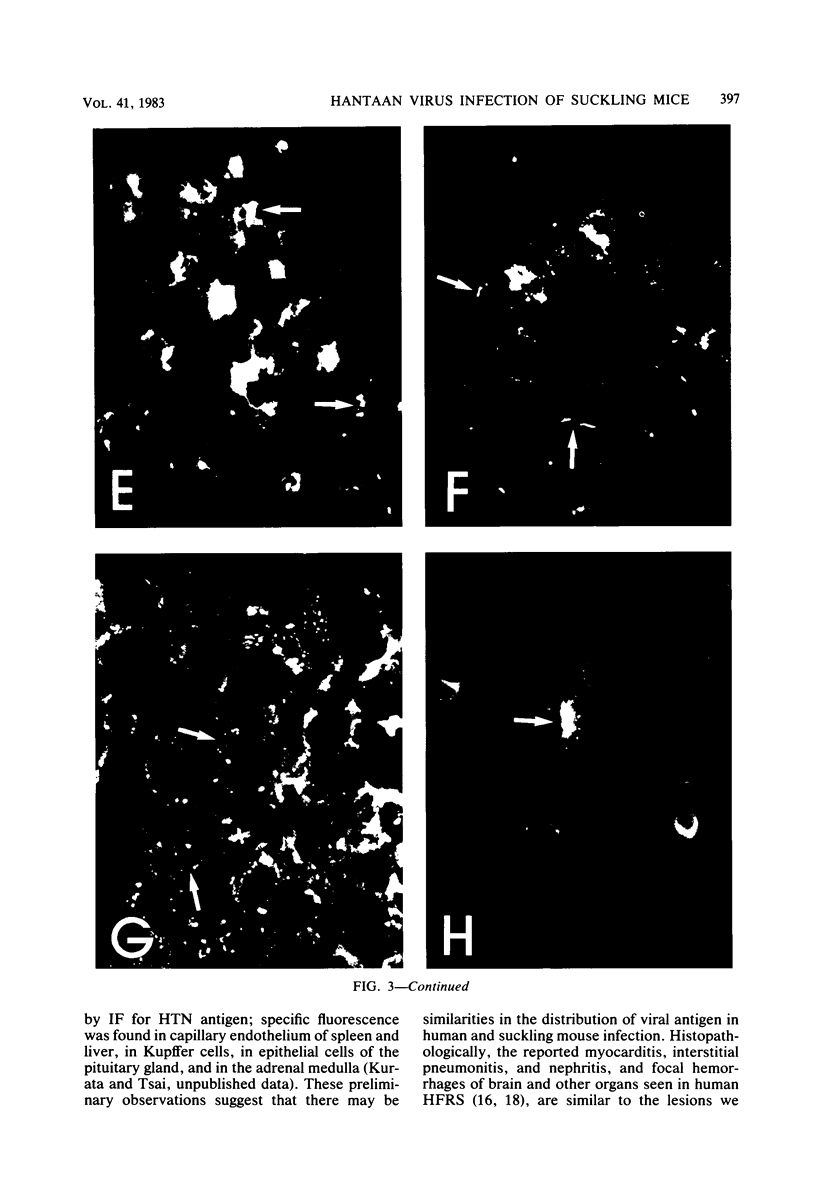
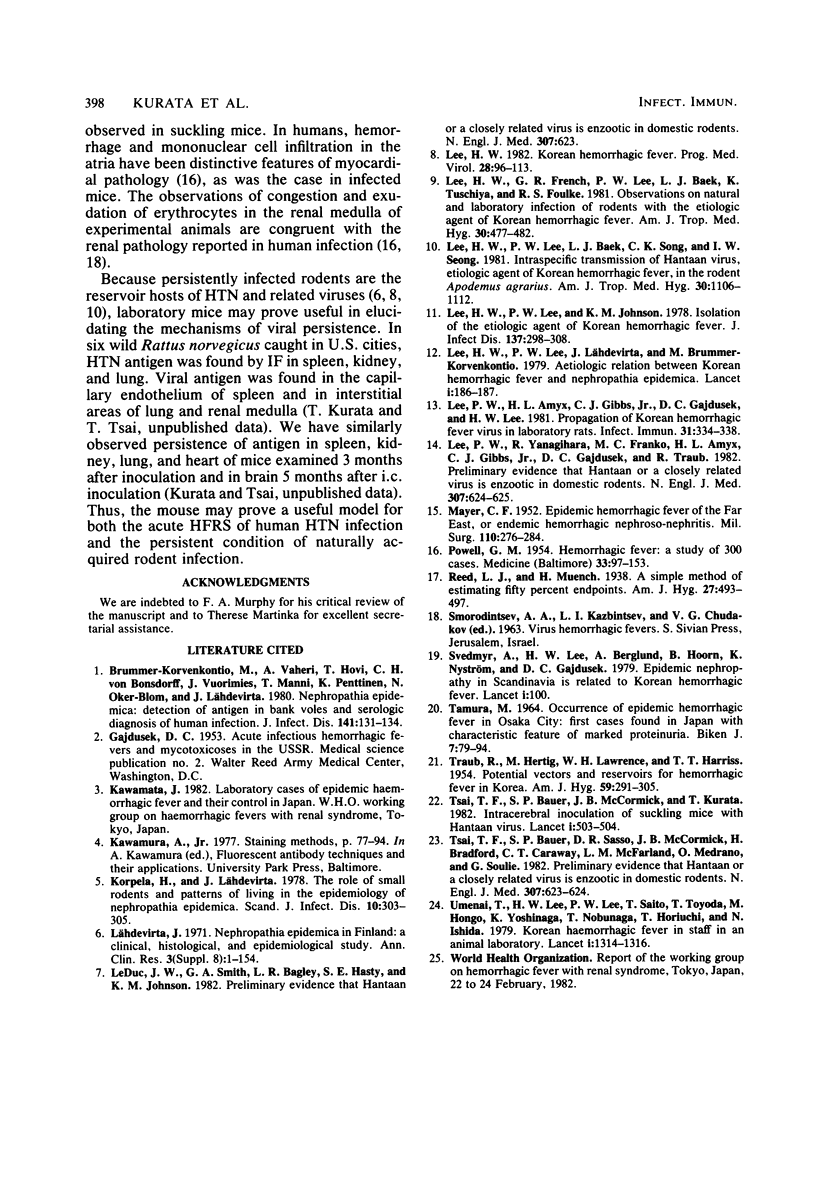
Images in this article
Selected References
These references are in PubMed. This may not be the complete list of references from this article.
- Brummer-Korvenkontio M., Vaheri A., Hovi T., von Bonsdorff C. H., Vuorimies J., Manni T., Penttinen K., Oker-Blom N., Lähdevirta J. Nephropathia epidemica: detection of antigen in bank voles and serologic diagnosis of human infection. J Infect Dis. 1980 Feb;141(2):131–134. doi: 10.1093/infdis/141.2.131. [DOI] [PubMed] [Google Scholar]
- Korpela H., Lähdevirta J. The role of small rodents and patterns of living in the epidemiology of nephropathia epidemica. Scand J Infect Dis. 1978;10(4):303–305. doi: 10.3109/inf.1978.10.issue-4.08. [DOI] [PubMed] [Google Scholar]
- Lee H. W., French G. R., Lee P. W., Baek L. J., Tsuchiya K., Foulke R. S. Observations on natural and laboratory infection of rodents with the etiologic agent of Korean hemorrhagic fever. Am J Trop Med Hyg. 1981 Mar;30(2):477–482. doi: 10.4269/ajtmh.1981.30.477. [DOI] [PubMed] [Google Scholar]
- Lee H. W. Korean hemorrhagic fever. Prog Med Virol. 1982;28:96–113. [PubMed] [Google Scholar]
- Lee H. W., Lee P. W., Baek L. J., Song C. K., Seong I. W. Intraspecific transmission of Hantaan virus, etiologic agent of Korean hemorrhagic fever, in the rodent Apodemus agrarius. Am J Trop Med Hyg. 1981 Sep;30(5):1106–1112. doi: 10.4269/ajtmh.1981.30.1106. [DOI] [PubMed] [Google Scholar]
- Lee H. W., Lee P. W., Johnson K. M. Isolation of the etiologic agent of Korean Hemorrhagic fever. J Infect Dis. 1978 Mar;137(3):298–308. doi: 10.1093/infdis/137.3.298. [DOI] [PubMed] [Google Scholar]
- Lee H. W., Lee P. W., Lähdevirta J., Brummer-Korventkontio M. Aetiological relation between Korean haemorrhagic fever and nephropathia epidemica. Lancet. 1979 Jan 27;1(8109):186–187. [PubMed] [Google Scholar]
- Lee P. W., Amyx H. L., Gibbs C. J., Jr, Gajdusek D. C., Lee H. W. Propagation of Korean hemorrhagic fever virus in laboratory rats. Infect Immun. 1981 Jan;31(1):334–338. doi: 10.1128/iai.31.1.334-338.1981. [DOI] [PMC free article] [PubMed] [Google Scholar]
- Lähdevirta J. Nephropathia epidemica in Finland. A clinical histological and epidemiological study. Ann Clin Res. 1971;3:1–54. [PubMed] [Google Scholar]
- MAYER C. F. Epidemic hemorrhagic fever of the Far East, or endemic hemorrhagic nephroso-nephritis; a short outline of the disease, with supplemental data on the results of experimental inoculation of human volunteers. Mil Surg. 1952 Apr;110(4):276–284. [PubMed] [Google Scholar]
- POWELL G. M. Hemorrhagic fever: a study of 300 cases. Medicine (Baltimore) 1954 May;33(2):97–153. [PubMed] [Google Scholar]
- Preliminary evidence that Hantaan or a closely related virus is enzootic in domestic rodents. N Engl J Med. 1982 Sep 2;307(10):623–625. doi: 10.1056/NEJM198209023071013. [DOI] [PubMed] [Google Scholar]
- Preliminary evidence that Hantaan or a closely related virus is enzootic in domestic rodents. N Engl J Med. 1982 Sep 2;307(10):623–625. doi: 10.1056/NEJM198209023071013. [DOI] [PubMed] [Google Scholar]
- Svedmyr A., Lee H. W., Berglund A., Hoorn B., Nyström K., Gajdusek D. C. Epidemic nephropathy in Scandinavia is related to Korean haemorrhagic fever. Lancet. 1979 Jan;1(8107):100–100. doi: 10.1016/s0140-6736(79)90083-7. [DOI] [PubMed] [Google Scholar]
- TAMURA M. OCCURRENCE OF EPIDEMIC HEMORRHAGIC FEVER IN OSAKA CITY: FIRST CASES FOUND IN JAPAN WITH CHARACTERISTIC FEATURE OF MARKED PROTEINURIA. Biken J. 1964 Oct;7:79–94. [PubMed] [Google Scholar]
- TRAUB R., HERTIG M., LAWRENCE W. H., HARRISS T. T. Potential vectors and reservoirs of hemorrhagic fever in Korea. Am J Hyg. 1954 May;59(3):291–305. doi: 10.1093/oxfordjournals.aje.a119642. [DOI] [PubMed] [Google Scholar]
- Tsai T. F., Bauer S., McCormick J. B., Kurata T. Intracerebral inoculation of suckling mice with Hantaan virus. Lancet. 1982 Aug 28;2(8296):503–504. doi: 10.1016/s0140-6736(82)90537-2. [DOI] [PubMed] [Google Scholar]
- Umenai T., Lee H. W., Lee P. W., Saito T., Toyoda T., Hongo M., Yoshinaga K., Nobunaga T., Horiuchi T., Ishida N. Korean haemorrhagic fever in staff in an animal laboratory. Lancet. 1979 Jun 23;1(8130):1314–1316. doi: 10.1016/s0140-6736(79)91948-2. [DOI] [PubMed] [Google Scholar]



